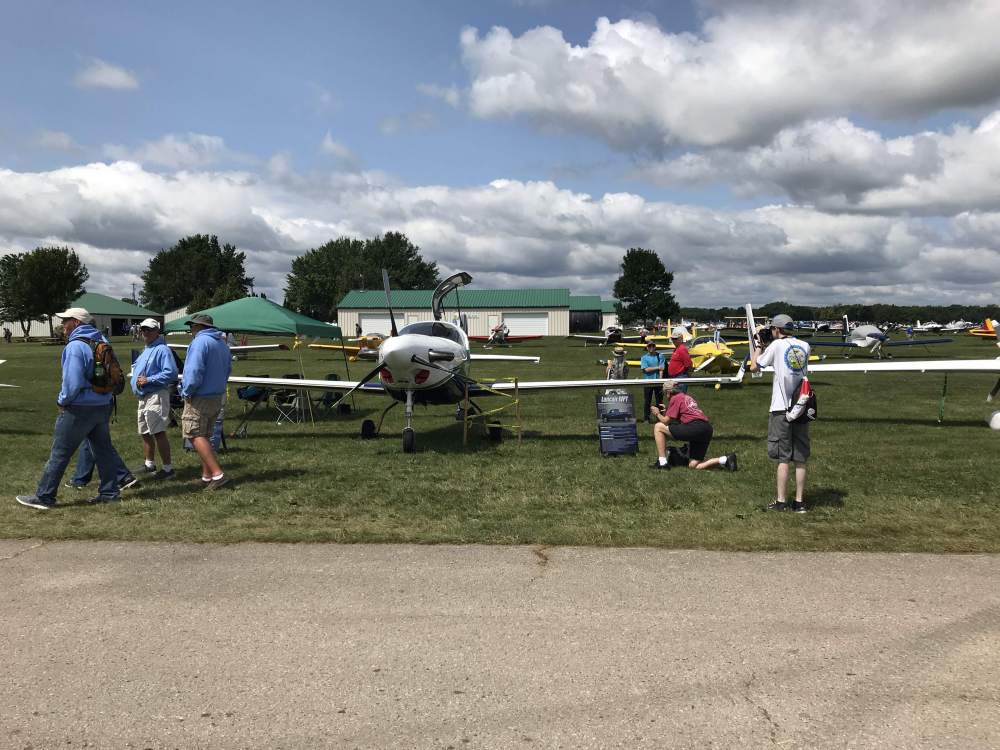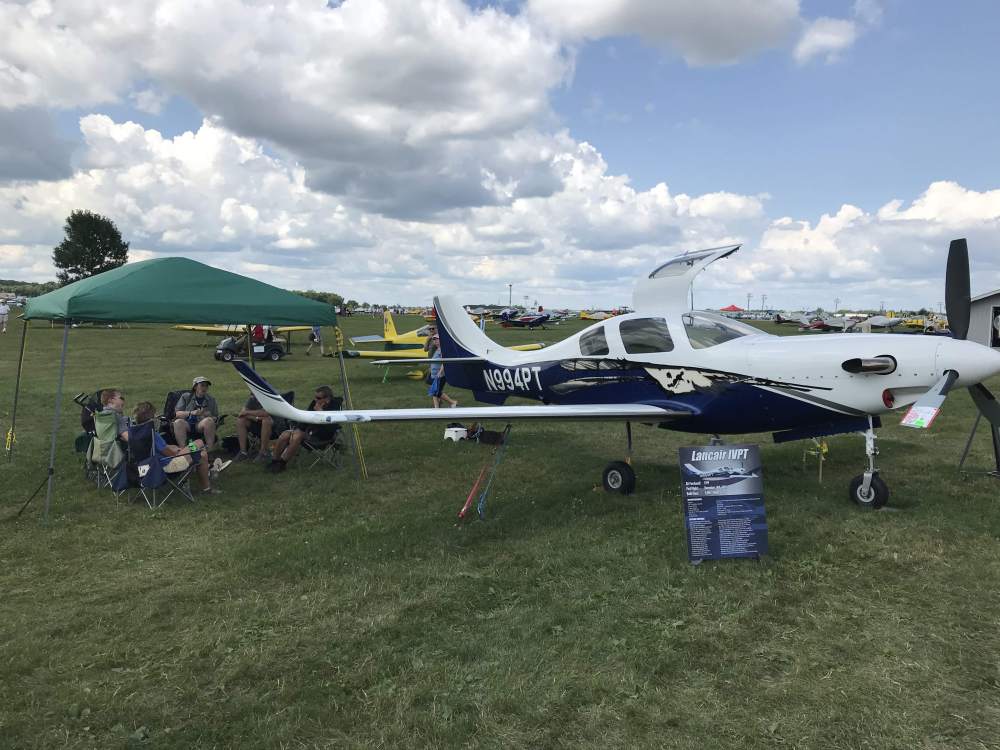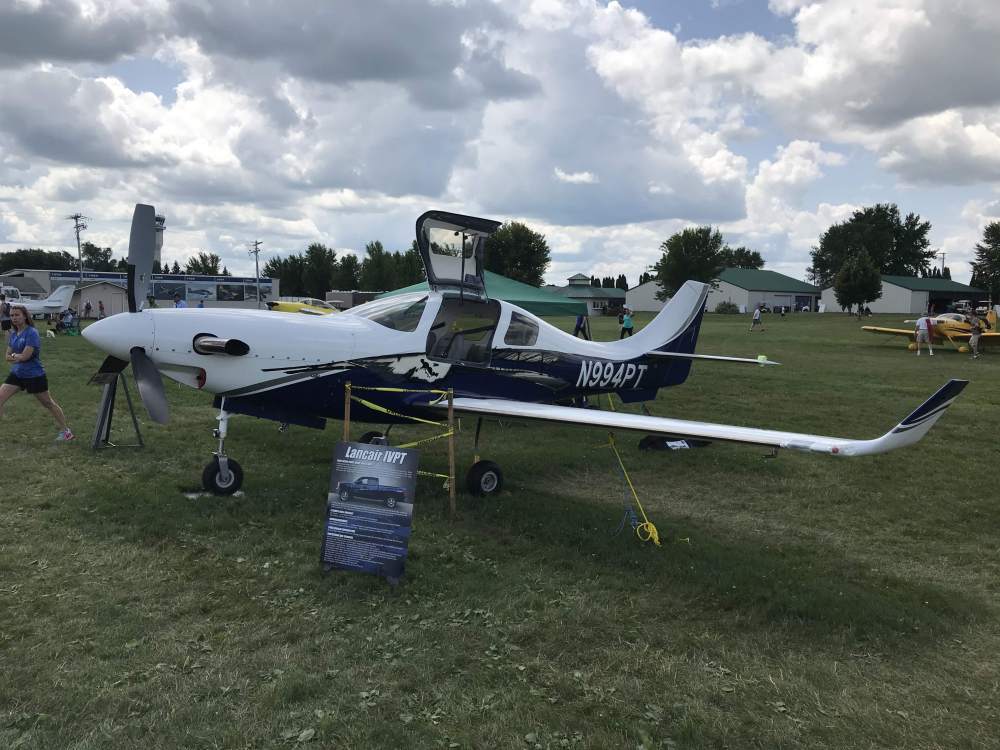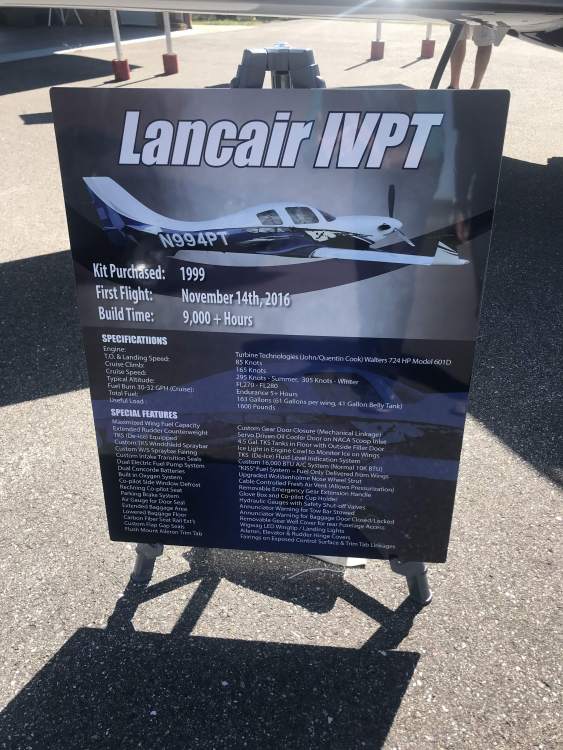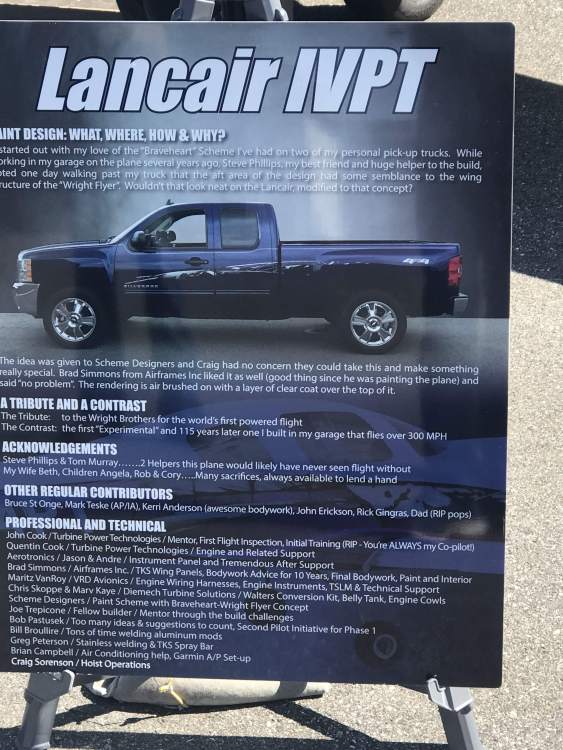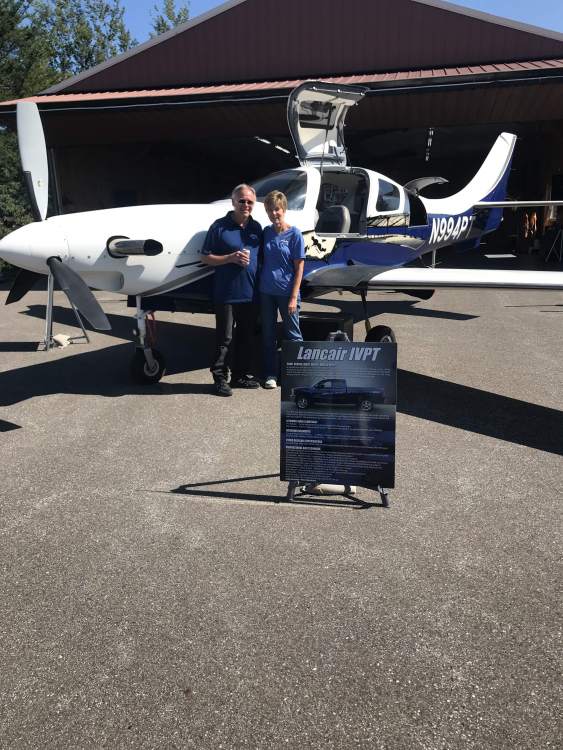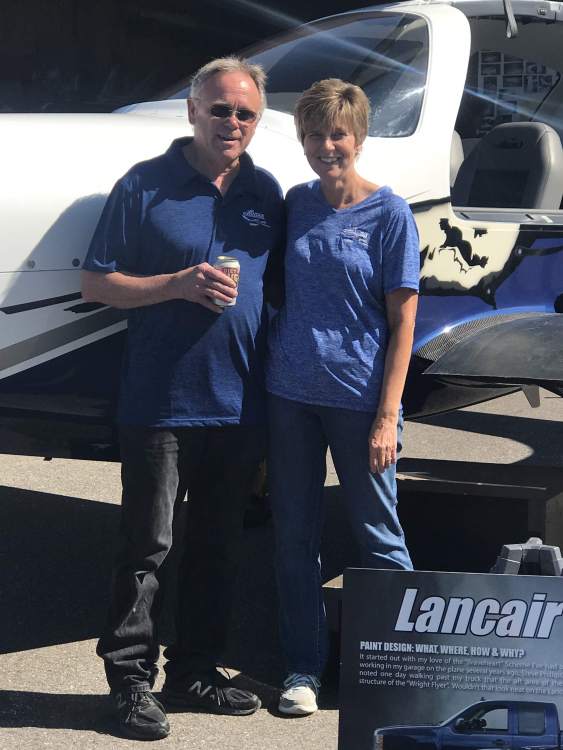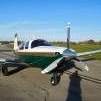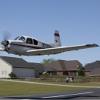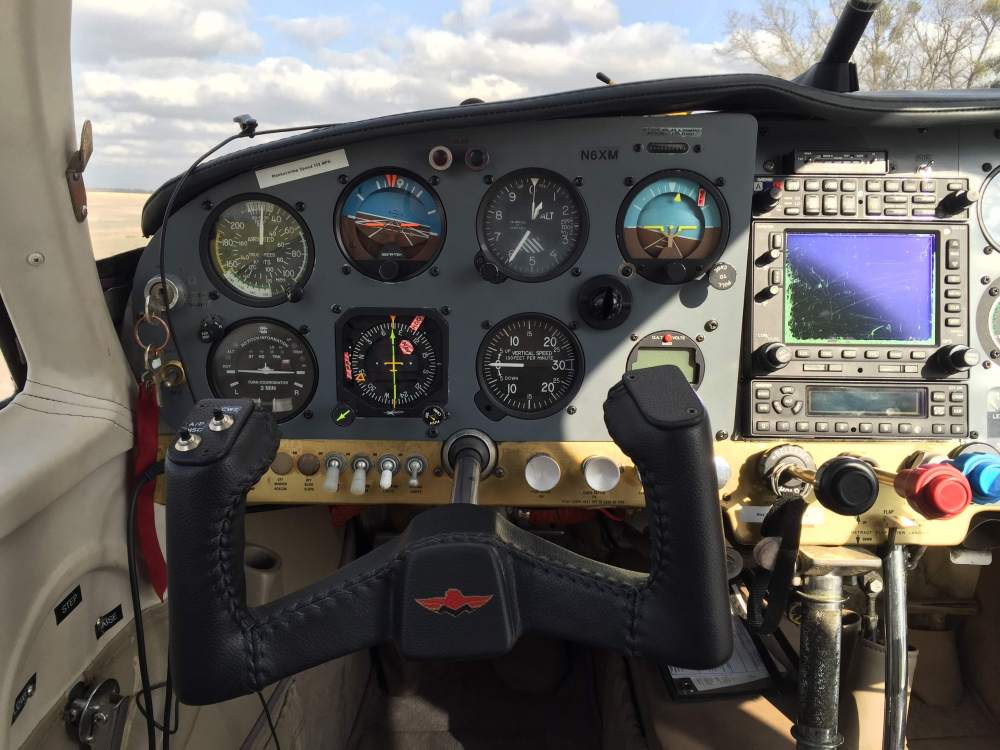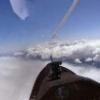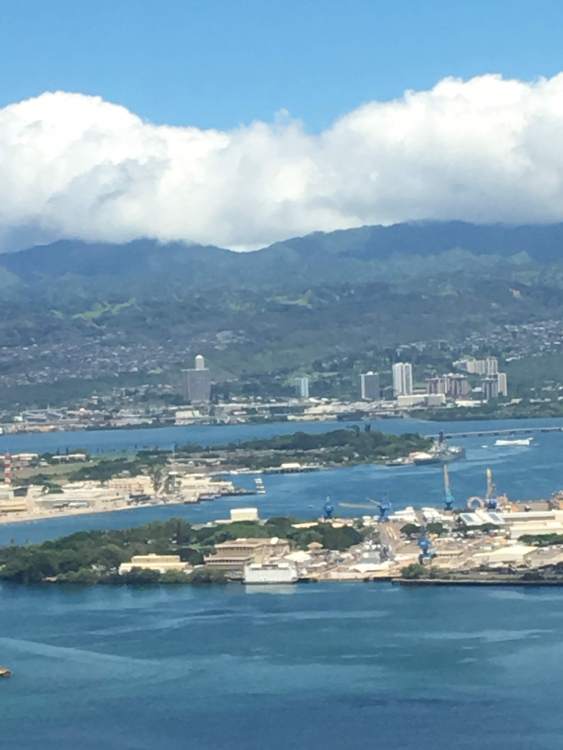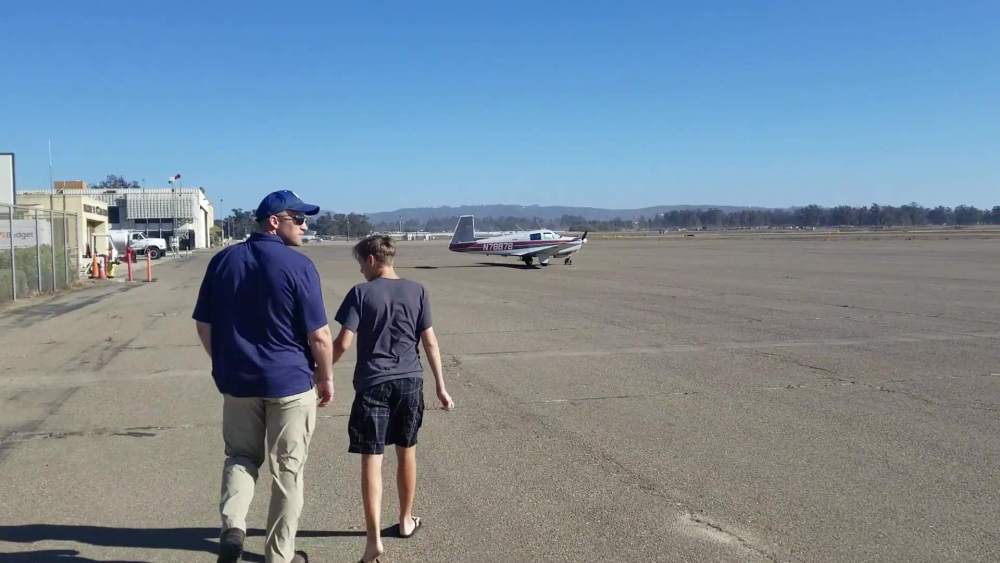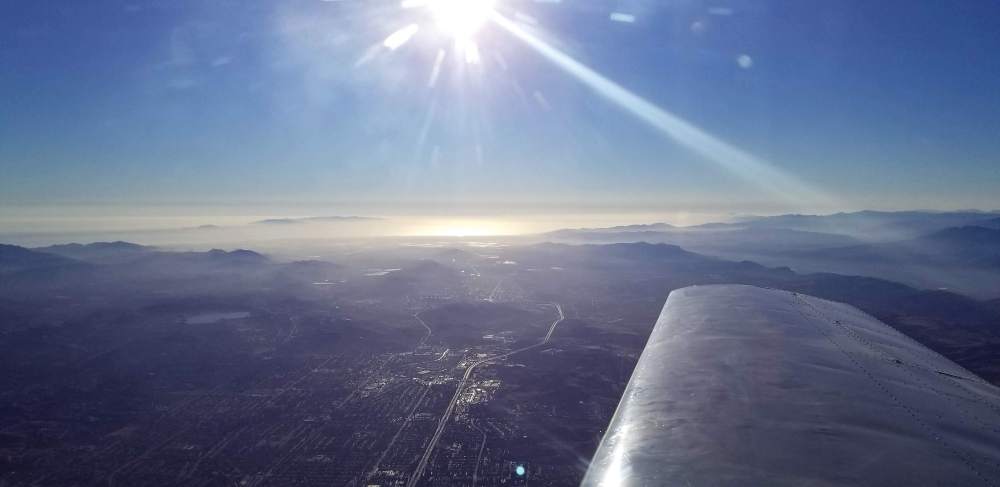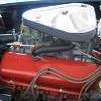Leaderboard
Popular Content
Showing content with the highest reputation on 09/22/2018 in all areas
-
Recently (in April) I took over the flight dispatching / coordinating for our mercy flight organization. I have been the coordinator on and off over the last 30 years, and the guy that took it off my plate 13 years ago was getting fried (24/7/365 on call). Anyway, I had a flight request going from IMT to RST (Rochester, MN / Mayo Clinic) in late August and all the possible planes for doing it were down for service work. I would ordinarily use my Mooney, but it's down for an engine right now. The girl was going over for a bone cancer consult, after just being diagnosed at Bellin in Green Bay. Mayo wanted her ASAP, as she was diagnosed early enough they thought they could give her a better chance than the 20% - 2 year life expectancy Bellin had told her. So I'm hearing her story and it's killing me we can't get her over there. She stated the 2 hour drives, with the tumor on her spine, to Green Bay were brutal on her. I'm thinking, how in the world is she going to sit for a 6-7 hour drive to Mayo? I called her and stated my only option was I could do the flight in my "Homebuilt" airplane, but qualified that this wasn't your average "homebuilt". I would be doing the flight as a friend helping a friend, not under the organization's control or direction. I also told her the typical hour and 30 to 40 minute flight in the twin or the Bonanza would be done in under an hour. She agreed to have me fly her over. She showed up early the next morning, with a close friend and some clear anxiety about the trip. She would have been nervous about a GA airplane ride anyway, and now an experimental? After looking at the plane she was more comfortable. I explained everything that was going to happen during the flight and I flew her over in 55 minutes. I waited a few hours and brought the two of them back, again in under an hour. During the flight I found out she has a 13 year old daughter, and has some real concerns she will see her graduate from high school. She really took a chunk out of my heart. After the flight she asked if there was anything she could do for me. I said "make it through this". A couple weeks later I flew her over again, waiting nearly all day as they did her final consult before beginning radiation. Her dad (about my age) went with this time and it was cool to see her telling him everything she had learned about my plane in the earlier flight. She was even bragging to the line guys how fast we were doing her flights (and I'm thinking I'm giving her a bright moment, albeit for a short period, during a pretty rough spot in her life....pretty rewarding!!). I told dad I was adopting her as my second daughter! It was just days later she needed to be dropped back over there for a couple days of treatment and two different organization pilots flew her over, and then back the next day. She was dropped again this past Monday, and I was the only one available to bring her back on Tuesday. By now I don't care what the fuel cost is, I'm doing what ever I can to make her journey a bit less painful and hopefully more successful. That was her last radiation treatment, and chemo will be done locally. Her only trips to Mayo now will be more spread out for follow up. I think she will get a few more 55 minute rides in the future. Tom15 points
-
I haven't posted for a while on the Lancair, well actually haven't posted much at all lately (been pretty busy). I saw quite a few of you at Oshkosh, with some of you stopping by to look at my bird on display. We had a real good show, got some attention and it was the first Oshkosh I attended from opening day until closing day. I had painted the prop, as one of my last "to do" items before the show, the day before we flew out. When we landed on Sunday afternoon (I was lucky enough to be approved for the war bird approach, so didn't see the delays some of you had) and after getting out of the plane, found my two 2" white stripes on the tips of my three blades had ran right off the wing tip. Clearly there was something wrong with the paint, as it had over 24 hours to dry before we launched. It was a mad scramble to get that fixed before judging began. I elected to just sand the crap off and paint it gray like the rest of the prop. We set up a pop-up tent which made the sun so much easier to deal with, dropping it down and pulling the top cover off each night. We also set up some signs describing the different aspects of the plane like the builder details, plane performance numbers, acknowledgements to those that helped me, and some detail on how the paint design was determined. My wife even attended the show for 4 days and my daughter and family plus my oldest son attended on Saturday. During my long build I had a hot rod friend invite me to a garage open house after he completed a restoration of an old 1950's Ford. I thought it was pretty neat, getting to visit with old hot rod friends and told my wife when the plane was done, we were doing the same thing. Two weeks ago we had a hangar open house. We had sent out about 120 invites and were totally blown away when a good 150 friends and relatives stopped by to see the plane. So many of MY friends had heard (ad nausea) about me building this over the last 19 years; it was time to show them I had actually finished it. I was also concerned my wife's friends were being told she was flying in this "homebuilt/experimental airplane" to Florida, so I wanted to quell concerns about what I was "forcing" my poor wife to fly in. Some of the comments were interesting. It was not what they were expecting. One of my snowmobile buddies asked Beth and me to stand by the plane for a picture. She hates getting her picture taken, but on the day of the hangar open house she was really enjoying herself. The smile on her face was priceless (actually, mine wasn't too bad either). We really enjoyed the day. @tigers2007 showed too. Tom9 points
-
Bought a 2x4 basics kit (the legs and shelf brackets) for about $70. Could have done it just fine with wood, but this is very quick to build and you're basically guaranteed it's square and level. I bought 1 sheet of plywood (3/4" finished - it's already sanded and sealed) and had home Depot rip it in 2 pieces, one 23" and one 25". Bottom shelf is 23, the top overhangs the front by 2". I like a lip on the top to clamp things to. Used 6 2x4's to build the bottom, 6 for the shelf. Used a piece of scrap I had to add a 2nd shelf. Added pegboard to the back wall. Also picked up a really neat LED under cabinet light. It has built in Bluetooth speakers! The whole project cost me around $225, with the lighting. It was too dark to take a good pic of it all set up, but I'd give a thumbs up to the 2x4 basics kit!6 points
-
Thanks @gsxrpilot and @EricJ but I can’t imagine any of you not doing the same! If we’re fortunate enough to have some success in life and have our health, how could we not be compelled to help others handed such a challenging fate? Tom6 points
-
Well, as luck would have it, while at the air show in Oshkosh I met a very serious buyer for my Rocket. He stopped by while I was repainting my prop on the Lancair (on the flight line, at the show......a whole other story). Anyway, he was SO interested he offered to come up to IMT while I was doing my annual in August and do a pre-buy inspection on it while it was opened up. He's a member of this forum but rare contributor from what I've gathered. Anyway, the day before his flight I advise him we found a couple cylinders low on compression but apparently, between several conversations to this point, and a good review of my logbooks by his IA, he was still interested in the plane. I had given him a "ball park" number (a high to low I would likely be asking for the plane) based on a run out engine. After his review/inspection of the plane, logs, and long conversations with my FBO, he was still interested. A couple days after he left, once the cylinders were off, we discovered the cam had some early stages of wear on one of the lobes; wearing off the hardness on the edge which, based on our local Mooney/ Continental guru John Miller, means I likely had no more than another 100 hours of life. I talked with my prospective buyer and indicated I really didn't see any sense in investing serious money into the engine at this point without doing an OH. He agreed and said he expected no more than another 100 hours after buying it, so as long as he had say in the OH decisions, he was still interested. In fact, the delay was giving him more time to get things settled on his end for the purchase. We got several quotes from the more "known" engine builders but the frustration was none of them were interested in using some of the very new components recently replaced on the plane, like a brand new (not OH'ed) turbo, new alternator (case was cracked, so I bought new outright), and very low time mags. In addition, my engine was a first run since new, so the case was in great shape and all but one cylinder were within specs for OH (and Jewell had good spares to replace that one). So......after reading all the positive comments on Jewell, and the estimate coming back WAY under the big boys, both my prospective buyer and I agreed Jewell looked like the best option. I ran the engine down there (800 mile drive) immediately after it was pulled. The prop was sent out for OH as well. Now waiting for the call it's done so I can drive back down and pick it up. Tom5 points
-
Now we are getting somewhere. Its not the nerd factor or splitting hairs. Its what can you do in that position. Take a look at 91.175. If you are at the approach mins and you have only the Approach lights in sight (strobe rabbit) you can continue down to 100' above TDZ at which time you must have one of the other 8 items in sight and have the required visibility. Have been there several times in Citations and Boeings. As mentioned, some ILS approaches stop at 250' not 200' so you might get another 150' to find the runway. 1/2 mile ain't all that far to look and 150' might make the difference of getting in or not. Now we get back to the previous discussion of hand flying an ILS below 200' DH on a CAT I ILS. Here you are at 250' DH or 200 DH and all you see is a flashing white light leading you in. Everywhere you look is white except for the rabbit light. Can you use the ILS below the DH to find the runway ? Of course you can. How else are you going to get in? But if you haven't practiced flying lower on an ILS in good weather now you are "in training" at the wrong time. This is why I always did every 3rd ILS (in good weather) down to 50' hand flying. Just so if I needed it I would feel comfortable. If there is any chance that you would need to avail yourself of this quirk in the regs you need to brief to yourself or other crew just what the TDZ is and what altitude you will go down to BEFORE you ever attempt the approach. Thinking about it at DH is not the time to be looking for the TDZ. Also to bear in mind maybe the limitations of the AP if you are coupled for the approach. Is your AP certified to go below 200'? On the 737-200 -300 it was set for 50' AGL so leaving it coupled at DH with only the rabbit in sight was fine. In fact I taught to leave it coupled to 50' in low weather as too many times I saw pilots click it off at mins and then climb back into the crap by not keeping the decent going. There is always a visual effect that causes one to level off at DH and not continue down. If your AP is not certified below 200' then you have to hand fly below 200' and transitioning from coupled to hand flying at DH is NOT the way to go. I strongly recommend that once you are stable gear and flaps down inside the OM you click it off and hand fly from there to the ground or GA. Again, my habit of doing every 3rd ILS down to 50' hand flown to stay in the game. So for me the no coupled approaches on the TT is not a factor. I can hand fly it just as easily as I can monitor the AP. BTW, the Brittain Accutrac has the same limitation, no coupled approaches even though it does track a localizer beam fairly well in good weather. Fire hose out and charged :-)5 points
-
Its been a while since I posted an update. I think I've finally hit a point where stuff stopped breaking (knock on wood). I've done nothing but contribute to the Shell stock price in the past few months, and I think I'm at about 350 hours in my plane since I purchased it 3 years ago. In other news, I've officially started my IFR training. I have the written scheduled for next week and today was lesson #3. A couple of approaches- the VOR's seem quite easy. The ILS was fun and my nephew took a time lapse of me coming down into Valdosta today (if the link works). I've accumulated 18 hours hood time and am looking forward to learning more. Stuff is starting to click and I can't say I've been excited about flying in a while but this is really lighting a fire under my butt.5 points
-
The King material teaches to the FAA written exam, because the objective is to help you pass that exam. It has always been the exam that remains outmoded, to the point that quite alot of the material you need to learn to pass the exam has very little to do with modern instrument flying. You nevertheless need to learn the material to pass the exam, and you have to pass the exam to get the rating. I used the King course when I took the exam, which was nearly a decade ago, and it was the same then. At the time, there were only about a half dozen GPS/RNAV questions in the whole exam database, and I don’t remember getting a single one on the exam that I took. If you want to learn material relevant to modern IFR, you have to do alot of that on your own, King has good courses, for example, on specific GPS units and how to operate them. So do many others. Beyond what the FAA teaches, you should learn: how things work in the IFR system, how to communicate and negotiate with ATC, spend alot less on learning “lost comm,” which should never happen, but learn how to “find comm,” learn the buttonology for a specific GPS, get an advanced course on weather and particularly icing, if you are going to fly a turbo learn about unique high altitude weather phenomena such as ice clouds and induction icing, learn good engine management, learn how to read a SkewTLogP, etc., etc.4 points
-
"Where much is given..." What a wonderful service you are giving. Happiness can be found through serving others, in doing so we forget our own wants and gain something greater.4 points
-
From a purely practical, "get it on the ground" position... my autopilot will take me all the way to 50' or to the ground. Any runway with an ILS will also give me quite a bit more margin in my Mooney than you'll have in a commercial jet. The width and length of the runway and the small foot print of my Mooney means that I don't have to be as precise and still am able to get the wheels down and stopped on the runway. I'm not trying to make an excuse for being sloppy, not keeping the needles centered, or landing on the centerline at the captains bars. I'm just saying there's a difference between getting a semi truck into a parking space vs a go-cart. So worst case scenario... find a runway with an ILS and ride it all the way down.3 points
-
Not sure exactly what could cause the broken plug. It looks like it got real hot. Was there anything unusual going on with the EGTs and CHTs ? Have you checked your GAMI spread to see if you have any rich or lean cylinders? As far as the severely fouled plug is concerned, those deposits came from somewhere. And that plug looks like it was running cold. Both of 6hose things could indicate a very rich mixture in that cylinder. How long had it been sense those plugs were cleaned? have you checked your timing? Read this: https://www.championaerospace.com/wp-content/uploads/2015/06/AV6-R-Aug20141.pdf3 points
-
3 points
-
3 points
-
...Passed. Took the written last November, started flight training this July. ‘Bout time.2 points
-
Hmmm. You’re describing a first world problem. It could be a lot worse. You could have a complete King tape series and nothing to play it on and when you did find something to play it on, you be trying to figure out what they meant by TCA, NDB and heaven forbid LORAN.2 points
-
Boy Dan, that a pair of the worst spark plugs I have seen in some time!! Holy cow! Indeed like Rich pointed out above, I'd want to take a closer look at that #2 cylinder - both a warm compression test and borescope. These days a very good articulating borescopes are very reasonable and this one for $200 is awesome https://www.amazon.com/Vividia-Ablescope-VA-400-Borescope-Articulating/dp/B00GY7C9ZW/ref=sr_1_21?s=industrial&ie=UTF8&qid=1537651824&sr=1-21&keywords=borescope But the preponderance of oil at the bottom could be due to leaky rings or valve guides. The compression test could be a good first clue to leakage past the rings as you listen to where the air goes. But the bigger concern is that the bottom plug looks so bad that it must have been offline for some time meaning perhaps several takeoffs where done without it? But maybe that was just one long flight that fouled that bottom plug so badly. I am pretty sure Dan is already familiar with this but I'd thought I include a brief description of how to do a run-up with your engine analyzer for other pilots that may not be aware to avoid ever taking off with this condition. During the normal run up, after temps stabilize at your run up rpm, put the engine analyzer into Normalize mode so that all EGTs are in the middle of their respective bars. Then switch to one mag. You should see every plug rise in EGT without exception. Without a rise that cylinder is probably already running on one plug. (If so, see what happens next on the other mag). Then go back to both and watch the EGT temps come back down to the middle of the bar. Then switch to the other Mag. Once again they should all rise without exception. But if you has one that didn't rise at all on the other mag, now you'll likely see that cyl EGT drop off the bar - it just went cold because the only plug that was firing just got turned off. Every run up should be pay attention to these details and give each isolated mag a few seconds to observe the rise - they are far more important than monitoring the RPM drop - which I would ignore and instead watch for the EGTs to rise. For the more advanced, the full rich mag test is not as revealing as doing a lean one, preferably in flight. You might be more likely to discover a weak plug with a lean mixture. When doing so you really do need to ignore the RPM drop limits, if doing this on the ground since a lean mixture can result in easily exceeding them, but instead continue to look for the all important rise in each plug on a single mag. The details are much more readable in the downloaded data with a sampling rate of every 1-2 sec. Set up a free account on Savvy to monitor the data, our free web tools make this pretty straight forward.2 points
-
I'll take my two Mooneys and have a go-fast and a slow spare and the extra half million in the bank. Just kidding. I don't have anything in the bank.2 points
-
How many hours on your engine? For starters, I’d spend a bit of money on 8 new Tempest Iridium plugs, and run the engine as you’ve been doing. Abandon the massives altogether. Let us know what your engine indications show after the switch. Steve2 points
-
2 points
-
Well done Lance! A quick anecdote from today. I've been in Dallas this week for work. I flew the Mooney up and parked at Dallas Love. We (my boss and I) were planning to leave Dallas at noon today to fly home to Austin (Smithville 84R). Today was a very convective day over much of Texas but we headed to the airport anyway. Just about the time I completed the pre-flight, a big cell moved right over the field and opened up. It was raining so hard we couldn't see any of the Southwest jets from where we were on the ramp. So we waited about 20 minutes in the FBO. Once it cleared enough to get out to the airplane without getting soaked, we climbed in, called for our clearance, fired up and called ready to taxi. Ground control said it might be awhile to get us out as Southwest jets were lined up everywhere. We were offered 13R even though we had a south departure and I quickly accepted. They might get us out quicker. We taxied to 13R and were lined up on Bravo behind two of those 737's. And the rain had picked back up to the point the prop couldn't keep the windshield clear. I called tower and said we were ready to go. Tower asked if we could get around the 73's. I said I thought I could. The next question was could we accept an immediate turn south on take off, terrain permitting. Again, yes. N252AD cleared for take off right turn as soon as able. We rolled past the Southwest jets and I swear I could see one of the First Officers saying, "hell we don't want to be flying today, what the hell is that Mooney doing?" We took off, made our quick right turn to cross the 13L at mid-field, climbed through several layers, in and out of rain, got one vector from ATC around a cell building in front of us, leveled off at 10K ft in the clear and flew home in the sunshine for a standard VFR approach into home. Without the IR, we'd have left the plane in Dallas, driven the rental car 3 hours to Austin only to drive back the next day to get the plane. And in spite of what it looked like to observers on the ground, it was safe, easy, and an enjoyable flight home. Go get that IR wet, and make sure it gets regular watering. When it's useful, it's very useful.2 points
-
While that's all well and good, our planes are neither approved nor qualifiable for Cat III approaches. And I'm not ready to turn in my cert . . . .2 points
-
OK OK I hit the wrong button 50' FEET OK You all knew what I meant anyway! :-) :-) And yes when i was doing it full time I could do 50 FEET every approach by hand. Anyone ever read about the GCAs in Greenland back in the old days? Sometimes it was necessary so one could get on the ground. I know, GCAs no one does them anymore. Dinosaur talking here but after 55 years a dinosaur that is still alive and well by doing what I preach.2 points
-
mines' about 10 percent of the cost 1100 miles on 64 gallons. Mooney F for the win2 points
-
It is quite something to impress you @kortopates. Maybe you want to pop over to FUL and see them in person :-) I feel quite confident the fouled plug was only recently failed. #2 EGT was not atypical until this start-up and overall performance was standard for the conditions on the last day of successful flying. If it was slowly building up junk, I would not be able to tell, but I think it must have been sparking. I always watch EGT when doing mag check. The last flight before failure showed all cylinders firing consistently on each mag...or I would not have taken off. My last LOP mag check at altitude was good, and one trip before this event (about 4 hours of flight time). This is based on vibration and watching EGT's in real time. Not downloaded. If it is rings, shouldn't both plugs be fouled equally? Light seepage gets the lower plug, but heavy blowby should get both equally?1 point
-
It appears something is unusual with the cylinder, or fuel, or oil, getting to the cylinder... 1) You can post some engine monitor graphs to see what other people can see. 2) We also have a direct line to Savvy.... for an experienced set of eyes for your graphs. Seeing if Paul is around today... @kortopates If I read this correctly you have had two damaged plugs in the same cylinder... not at the same time? One of the causes for damaged plugs could be engine timing and pre-ignition... Something to keep in mind. You might be able to visit the spark plug manufacturer’s website for pics and causes of typical plug failures... (Rich did this already for us) thanks Rich! Taking into account what the esteemed @Yetti is saying... get a really good look at what is on that spark plug... post a few pics... is that aluminum on the build up? if the timing has advanced and pre-ignition is going on, a piston may be going away... quickly. A hole in the piston can occur under these conditions during a short climb... Do you have a local mechanic with a dental camera and ignition timing equipment? Aluminum melts at 1,221°F for reference. It is the boundary layer conditions of the fuel air mixture that keep the pistons from melting. Ignition timing and Engine knock has the ability to break up the needed boundary layers... This can occur with out any feeling of vibration out of the ordinary... CHTs typically get extra hot when ignition timing has been adjusted too far BTDC... seeing any hot CHTs? Or any unusual EGT to cause a single hot CHT? PP thoughts only, not a mechanic... not trying to induce any un-needed fear... It would be great if you can post the graphs of EGT and CHT from the engine monitor... Best regards, -a-1 point
-
The plane performance can be found in the POH. As we say in shooting, the gun is more accurate that the shooter will ever be. Can you do it is the question.1 point
-
I have also liked the King courses, and having met some of the staff at OshKosh, feel they are a team of genuine aviation fans. I did a search, and found a King IFR training syllabus. Lesson 14 is RNAV w/ glide slope approaches, and Lesson 15 is LNAV. I hope that these lessons are just further along in the course you have. -dan1 point
-
1 point
-
Great decision in wanting to do the upgrade. Upon purchase I had mine done with the assistance of Don Maxwell and I am really happy with the results. Here they are looking so good I ended up redoing my panel as well a few months later. Sent from my iPhone using Tapatalk1 point
-
You can get the shafts from Mooney. You'll need to go through an MSC to order them. You might also get the yokes from Mooney as well, but it's a lot cheaper if you can find them second hand somewhere. Be careful buying shafts. They are different between models. So if you find them used online somewhere, make sure they will fit your C. You might find an old set of yokes for a J or K and then have them covered in leather at AeroComfort in San Antonio. I can tell you from experience, it makes a really nice upgrade to your cockpit.1 point
-
IIRC, in the IO-360, the left mag runs the lower plugs on the left side, e.g. #2 and #4. So if the left mag failed on the runup on #2, it was the #2 lower spark plug that was not igniting. The cracked insulator on the #2 top plug was a red herring (although worth replacing). So the question becomes why your #2 lower plug is so fouled.1 point
-
Nice work, Tom! Amazing what GA can do. GA in the right hands is incredible! Best regards, -a-1 point
-
1 point
-
Tom, that is a marvelous plane! I am happy to say I have seen this one in person and it will not disappoint. No doubt you have priced her to sell!1 point
-
Lately I just use a plastic grocery bag for Step 5. Worked fine the last couple of oil changes. Step 7: Profit!1 point
-
I thought that if you saw the lights, you could go another 100' but you must see the runway to go lower.1 point
-
In actuality, A CAT III ILS system is called a "Capture ILS System" and not just the run of the mill CAT I ILS system. Totally different animal for day in and day out use safety. BUT a normal CAT I ILS is usable IN AN EMERGENCY ONLY down below 200' . One has to be very careful if it is used in bad weather below mins IN AN EMERGENCY! Here's a question- How low CAN you go before you have to identify the runway environs or make a go around, on a CAT I ILS? School time, break out the books.1 point
-
OK lets get real here folks. I'm NOT suggesting to do 50' approaches in weather just practice to 50' with good weather BTW, ALL CAT III approaches are required to be AP flown not hand flown in real life CAT III weather (with dual or triple redundant APs) but if you can easily do a hand flown 50' approach in good weather it might come in handy someday when the crap hits the fan. That's all I'm preaching. Be better than the min required for the test. Be the best you can be at flying. Great for the flying confidence. Great for CAT I hand flown ILS approaches also as you know you can do it with no sweat. Like I said, 200 & 1/2 becomes just another easy VFR approach when you can always do 50" hand flown. 200 & 1/2? A piece of cake to do.1 point
-
1 point
-
In the new airline world its called "being an autopilot cripple" Just look to the 777 in KSFO If you can't click it off at any time and fly the airplane just as well as the AP, you ain't proficient. I'll go even further and say that if you can't fly an ILS to CAT III mins (50"), by hand, and keep the needles perfectly centered you ain't good enough yet! Then 200 & 1/2 is a non-event. Almost like VFR.1 point
-
Lynn has done a couple so far with 2 scheduled for the winter [emoji846] Sent from my iPhone using Tapatalk Pro1 point
-
Dude, my C will go 1043 on 52 gallons, plus a 45-minute reserve, if I go high and slow. It also costs less than your F. Gross weight, however, limits range to a mere 970 miles. I generally use power & altitudes that limit my range to 800-plus miles, and get there much quicker.1 point
-
https://www.aglaviation.com/agl-home Located @ KMRN, Foothills Regional Airport in Morgantown, NC, near Charlotte. They are a Mooney Service Center.1 point
-
Mike Busch's book on engines covers this pretty well, at least it was understandable for me. He spends a lot of time discussing how you know when you need to overhaul, and what compressions really mean. https://m.aircraftspruce.com/catalog/bvpages/mikebusch-13-21514.php?gclid=CjwKCAjw54fdBRBbEiwAW28S9rkcWKucFvWWp-MsWGZBjD2PuV2OTgAEAA4k9x_nHTJycxs1IQOmwBoCtbAQAvD_BwE Sent from my iPhone using Tapatalk1 point
-
I was taught to never trust the fuel gauges in aircraft. First thing installed in my F was a JPI FS-450. Best investment I have put into the airplane. I would love a full new engine monitor system with the fuel flow and levels but the FS-450 is a great first step for not much money. It gives fuel remaining if you set it up correctly after fueling. It will give fuel burned on the flight and hooked up to GPS it will give fuel required to next waypoint. It give much better peace of mind than gauges. It is nice to be 4 hours into a flight and know that I have 1.5 hours of fuel still on board (I have bladders and only 54 gallons of fuel). It is also nice in fuel injected airplanes to be able to set the fuel flow (I fly high most of the time, so don't have to worry about leaning too much), I just pull the mixture back to 9 gph for cruise.1 point
-
1 point
-
Flew to Santa Maria for a birthday lunch. It was a beautiful flight and the food was pretty good (even if they only had Pepsi products...). We were given vectors for traffic four times as we passed through the Burbank area. Once was a vector and altitude restriction on descent for a 737 landing at Burbank that had to go around. The comment the pilot made to ATC was "We were too high and unstable," even the big guys go around. https://intothesky.us/2018/09/15/birthday-lunch-in-santa-maria/1 point
-
Not all planes have that problem. The SR71 goes coast to coast in about an hour. https://jalopnik.com/the-sr-71-blackbird-retired-by-flying-coast-to-coast-in-1689846454 I'll take mine in black.1 point
-
1 point



